The Cooler Master MasterCase 5 Review
by E. Fylladitakis on August 27, 2015 9:00 AM EST- Posted in
- Cases/Cooling/PSUs
- Cooler Master
- mid-tower
- Case
- Freeform
The Interior of the Cooler Master MasterCase 5
Much like the exterior, the interior of the MasterCase 5 is entirely black as well. Every part, with the sole exception of the motherboard's standoffs, is black. The metallic surfaces are sprayed with the same satin black paint as the exterior, while the few plastic parts are slightly glossy. A large rectangular hole is cut on the motherboard's tray to allow for the installation of aftermarket coolers without having to remove the motherboard.
A metal floor separates the system area from the PSU compartment. This floor is permanently attached to the frame and cannot be removed, which is not exactly great for a modular case that boasts maximum flexibility. However, it is necessary for the mechanical cohesion of the case, as the mechanical strength of the body is not great, especially for a case with two carrying handles. If not for the metallic floor, the rest of the chassis would be prone to twisting/bending.
There are two holes on the floor, covered with rubber grommets, for the routing of cables, as well as an opening near the front for the installation of liquid cooling radiators. There are also two slots for the "slip-and-clip" SSD pockets. Each pocket is held in place by a thumbscrew.
Each of the expansion slot covers is vented and held in place with a thumbscrew. The lowermost cover is different and can serve as an exit for up to three cables. To minimize the chances of pulling/damaging the cables when moving the case, they can be locked by twisting them over the hook next to the hole.
As the metal floor is fixed to the case, the PSU can only be installed by sliding it in from the rear of the case. Four thumbscrews hold the PSU cover in place. Cooler Master installed two rails that the PSU slides and sits upon once inserted. To insure that there will be adequate and proper air intake regardless of the power and position of the PSU's fan, the designer perforated the floor beneath the PSU all the way down to the center of the case. A metal stand is located in the PSU compartment, near the front of the case. It serves as a stand for a dual bay drive cage, if there is one installed, and can be removed to make room for a liquid cooling radiator.
Only one dual drive cage is installed in the standard version of the MasterCase 5. The user can move it vertically to any height between the top of the case and the compartment's floor, install it inside the PSU compartment, or even remove it completely. The 5.25" cage has convenient plastic lever locks for the devices. If desired, the 5.25" can be removed, allowing for the installation of a third front intake fan and or the installation of a 3.5" devices cage instead.
With the removal of the faceplate, virtually only the frame of the MasterCase 5 remains. The intake fans are installed from the front side of the case but there is not enough room for a radiator there. Liquid cooling radiators can be installed only to the inside of the case. Although the removal of the drive cages allows for the installation of three intake fans, a triple radiator is unlikely to fit, as its extra height will bump to the top of the case.
The radiators of all-in-one liquid cooling solutions should easily fit in the lowermost part of the case but beware of other solutions that may be too wide or thick. Also, do note that the presence of a radiator obviously denies the installation of a drive cage. A 240/280 mm radiator requires the removal of the metal stand in the PSU compartment as well.
The rear of the motherboard tray is all black as well. We can see two more slots for the "slip-and-clip" SSD pockets here but there are no pockets installed from the factory. Only two are provided with the case and can be installed on either the main compartment's floor or here. If more are required, Cooler Master is offering them as extras for $5 each. The clearance of 23.6 mm (0.93") is plenty for the easy routing of cables and the cable straps to the left aid cable management a lot. The only issue is that the presence of the SSD slots prevented the creation of cable tie mounting joints. There are only a couple of mounting joints located near the back of the case.
For the means of this review, we installed a Corsair AX760i with the red cable set, for strong visual contrast. It fits without issues inside the MasterCase 5 and the cables are long enough for a standard system. Still, do note that the CPU power cable is not long enough to be secured with cable ties across the edge of the motherboard tray, at least not without placing a lot of stress on the connectors. Other than that, cable management is easy and the design of the MasterCase 5 does help with cable management a lot.
A standard ATX system comfortably fits inside the system area of the MasterCase 5, even with the extra drive cages installed. However, cards longer than 29 cm (11.4") will not fit with a drive cage installed in front of them. Without a radiator installed, the maximum length of an expansion card is 41 cm (16.1"). If a radiator is installed, its thickness needs to be subtracted from this clearance. Up to a 280 mm radiator can be installed at the top of the case only if the extra top cover is purchased and installed and still we would not recommend the installation of a radiator thicker than 30 mm. Without the top cover, there is not enough clearance for a liquid cooling radiator, only for two fans.


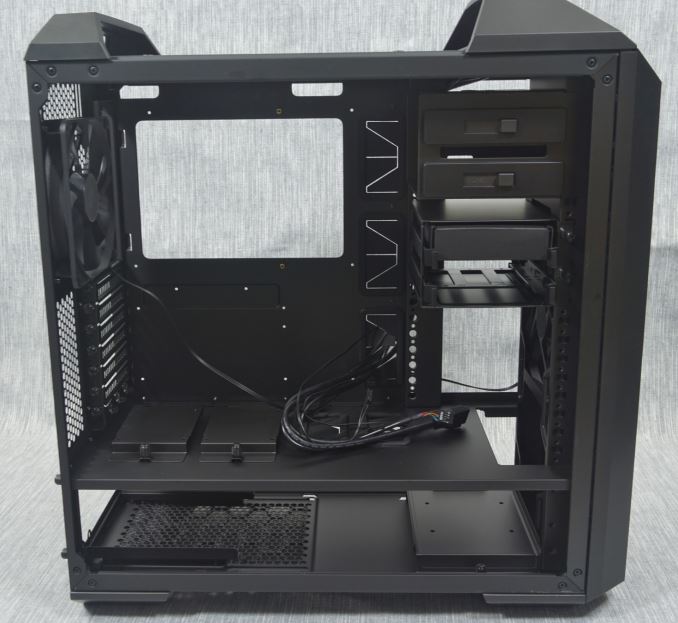
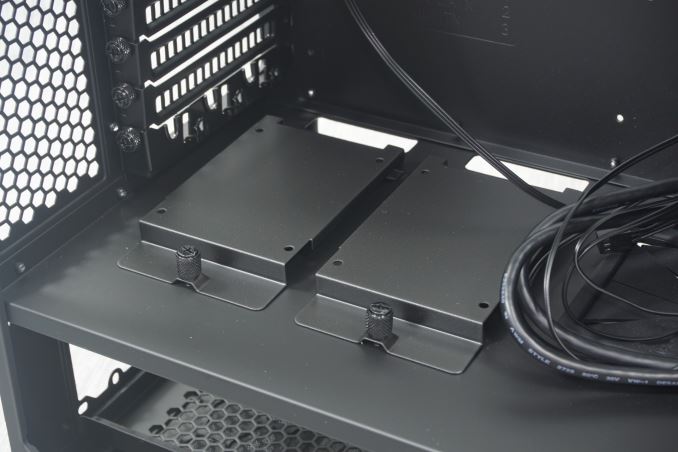

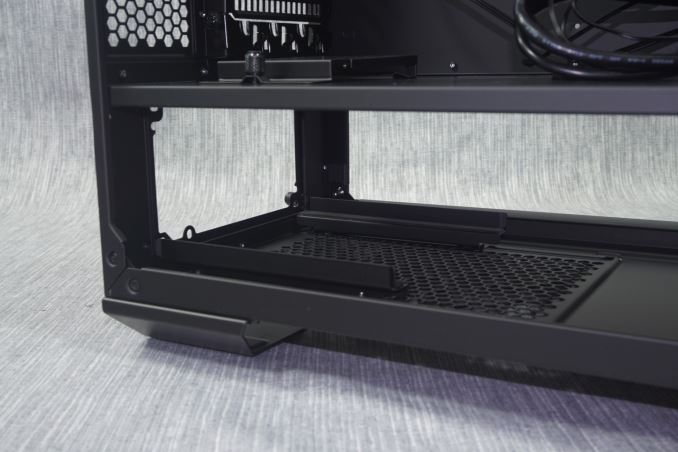
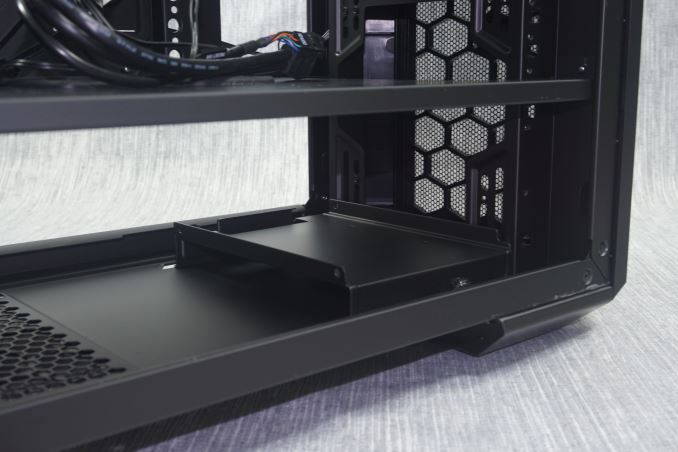
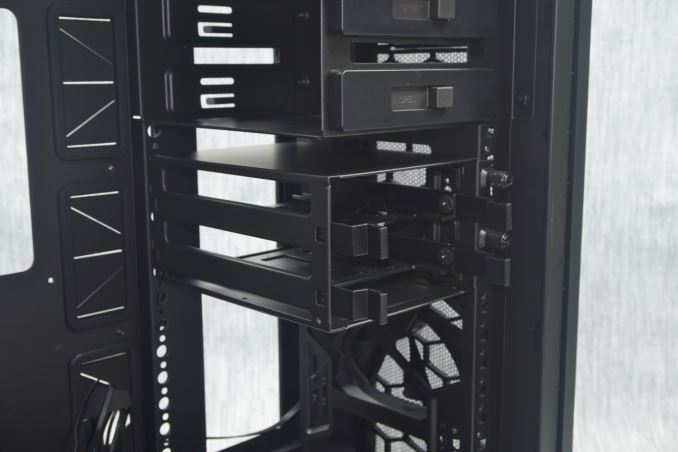
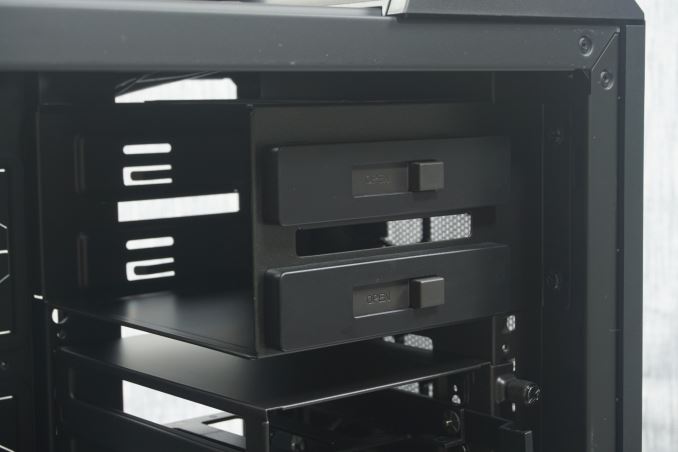
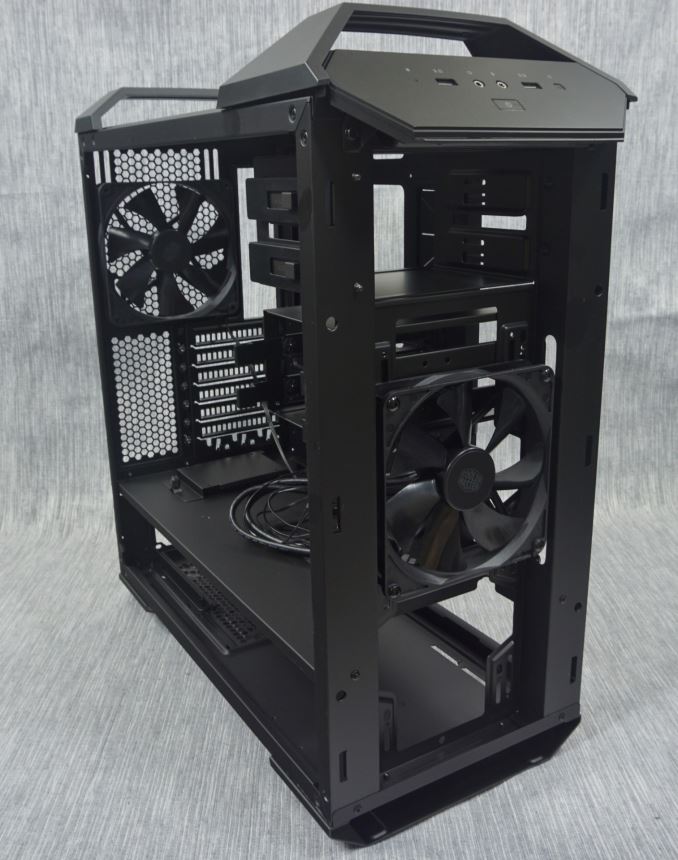
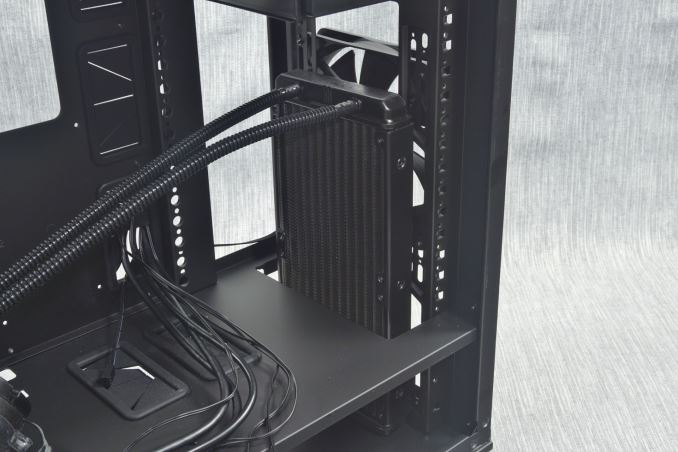
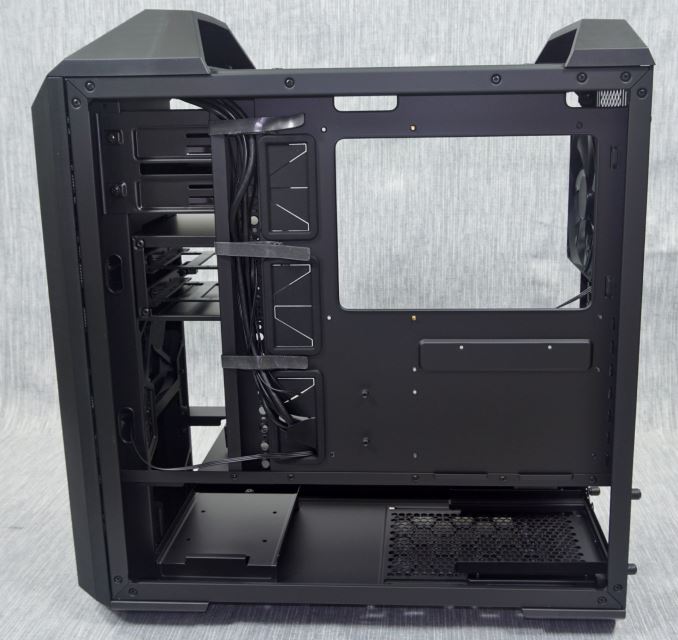
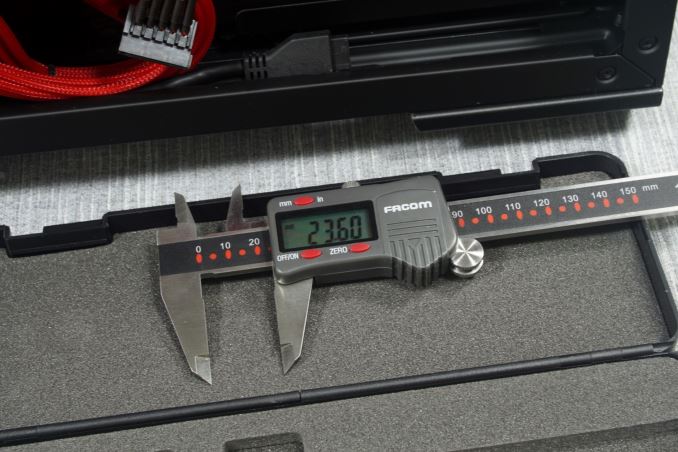
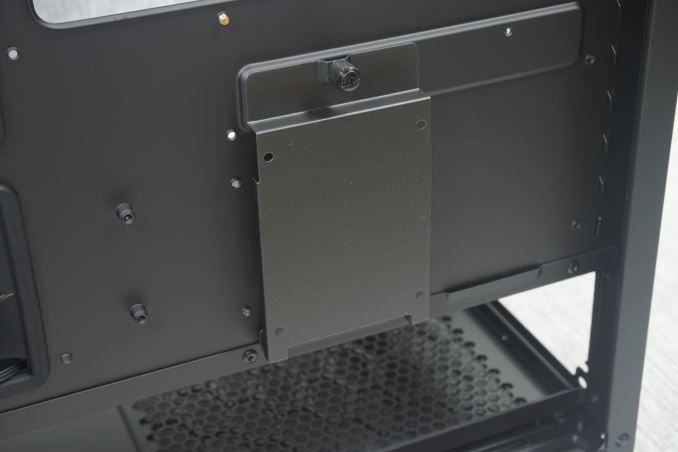

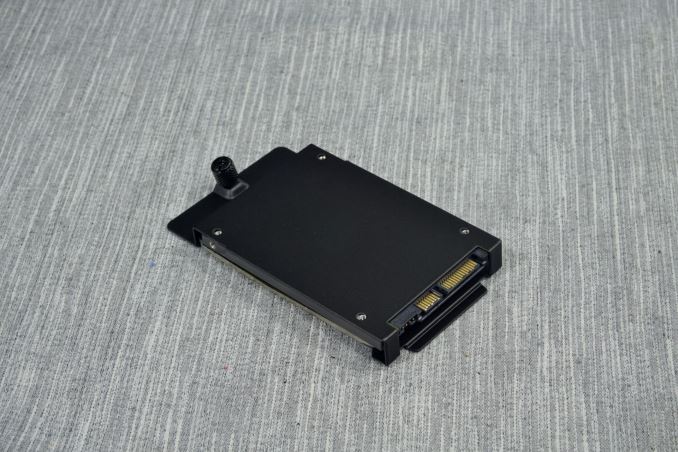
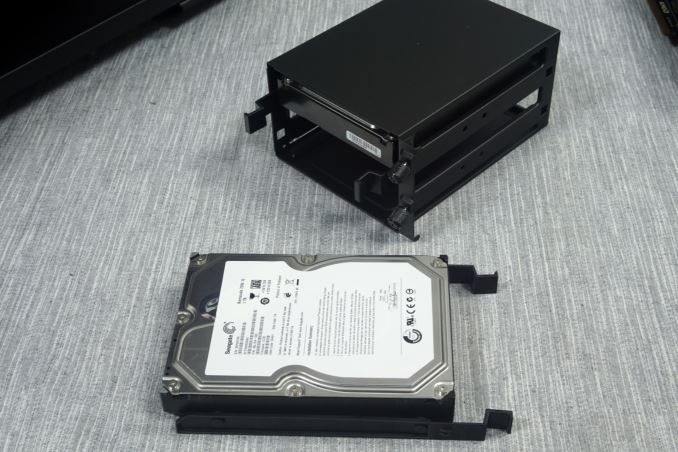
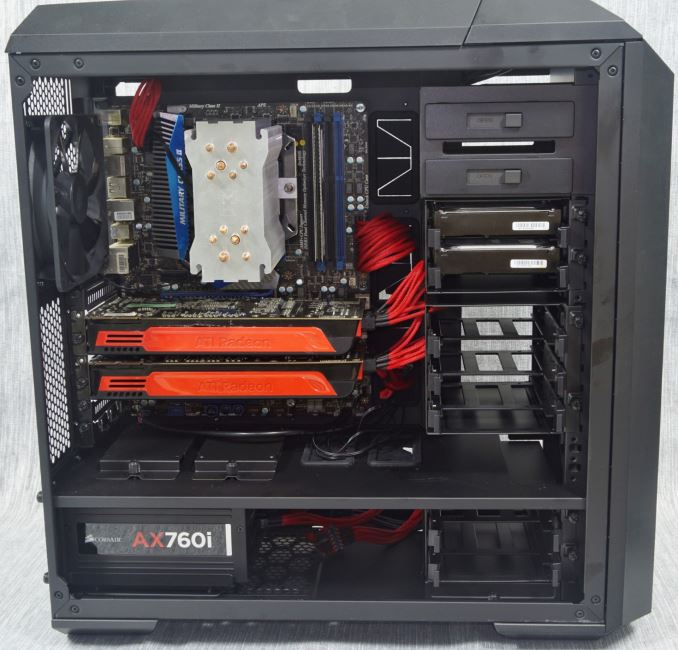
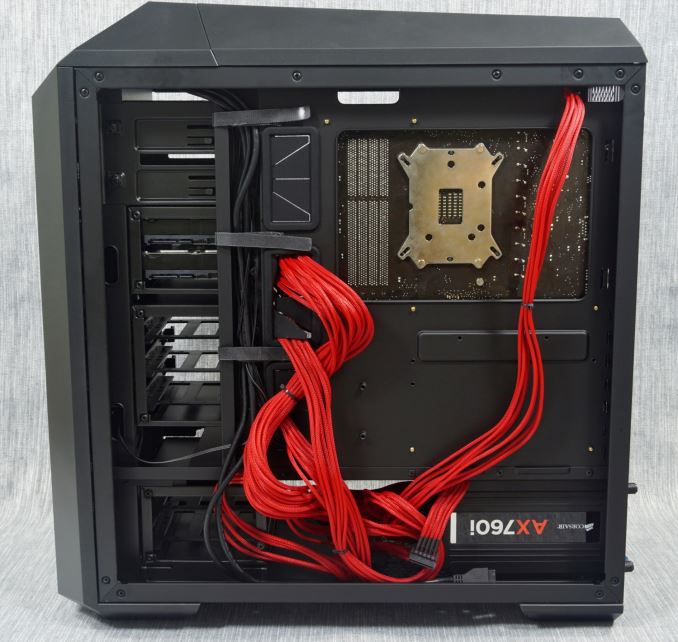








32 Comments
View All Comments
winterlord - Thursday, August 27, 2015 - link
how much does it weigh?BrokenCrayons - Thursday, August 27, 2015 - link
From the second page of the review - "It also tipped our scale at 10.4 kg, making it a fairly heavy case for the size."nmm - Thursday, August 27, 2015 - link
From where I'm sitting their "modular" approach looks a bit like they're just selling you a case that doesn't come with all the parts. I'm pretty sure my Fall Sky Lake build is still going into a Fractal Design Define R5 (or perhaps a Define Mini if they ever get around to updating it... and if anyone ever releases a micro ATX board that isn't riddled with useless SATA Express ports).freeskier93 - Thursday, August 27, 2015 - link
I'm sure the designers/engineers know very well what countersinking is, so well they also know countersinking into such thin sheet metal is not a good method. Even at a large 130* countersink there would be very little surface contact between the sheet and fastener.E.Fyll - Thursday, August 27, 2015 - link
The openings are made for screws with countersunk heads and the thin sheet metal, even with fans attached, has no weight that would cause problems with such screws, even if the contact surface is small.Besides, the thin sheet sits on the metallic frame and gravity does not go up.
freeskier93 - Thursday, August 27, 2015 - link
Taking a closer look at the pictures it looks they are dimpled, which would be the better method, so it is odd they used a big cheese head screw.'nar - Thursday, August 27, 2015 - link
I have to agree with the reviewer, and here are some reasons why. You can expand a case in any direction with optional components, except the rear panel with the motherboard connections. The top can not only have a radiator, but also padded external drive bays, Flash drive USB ports, additional buttons, fans controls, lighting controls, and such. The front can have a metal frame that screws to the existing frame to extend the case with new drive bays, radiator options, a closing door, thicker sound insulation and filtration. The bottom could have an additional power supply for high-power rigs and more drive bays. And the side panels could come with different window shapes and embedded lighting options, sleeves for the motherboard manual, hangars for headphones, or art-deco. This would all be designed to bolt onto a standard core frame size, so your core can be swapped for different configurations as well.Sounds good, but I have not made any CAD drawings to check any sizes or clearances to see if any of this would actually fit together in any aesthetically pleasing way. But I do desire a case with good sound absorption and air-filtration, water cooling, and hot-swap hard drive bays.
Taurus229 - Thursday, August 27, 2015 - link
If I were to spend $110.00 on a case I would want it to have what I feel is important to me, and not have to consider buying accessories to upgrade. Either it has it or it doesn't. It's that simple.sonny73n - Friday, August 28, 2015 - link
All PC cases lack of something very important to me - dust filter. I'm talking about real air filter, the one you have in your car, not some foam. Foam air filters can't block fine dust which in about a year will build up a nasty layer of dust on everything, especially on the fans and CPU heatsink. I had to modify my Antec case with 3 fans sucking air in from the front, behind a modified washable car air filter, and 3 blowing air out on top, side and back. It's been almost 2 years and no dust. No more worries of system overheats and annual cleanup caused by dust buildup on my OCed system. Yay ;-)marvdmartian - Friday, August 28, 2015 - link
Not sure....what exactly is the reason for handles on top of a case this size? Is it just for the coolness design factor? Haven't seen a LAN party in years, but I doubt people are lugging around cases like this much, any more.While it might have some nice features, for me, at least, the price point is too high, for what it's offering.